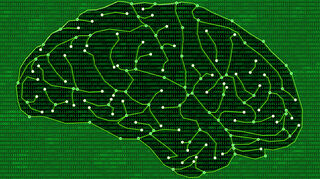Artificial Intelligence
AI Fuels Industry Momentum in Brain-Computer Interfaces
Recent breakthroughs combine AI, neuroscience, and brain-computer interfaces.
Posted April 21, 2022 Reviewed by Lybi Ma

Recent scientific breakthroughs are accelerating innovative technologies that give hope to those who are speech or movement impaired with the potential to improve the quality of their daily lives by controlling external devices through brain activity. Brain-computer interfaces (BCIs) have been advancing rapidly thanks to artificial intelligence (AI) in the past few years.
Brain-computer interfaces enable two-way communications between the human brain and a machine. In the field of health care and life sciences, the hope is that brain-computer interfaces can help those with paralysis and brain disorders by restoring independence.
The rise of artificial intelligence machine learning, in particular deep learning, has helped scientists achieve breakthroughs in the BCI industry. For example, earlier this month a new wearable BCI system demonstrates the potential to enable people with quadriplegia to control assistive devices with AI predicting movement intent. That study was conducted by researchers affiliated with Carnegie Mellon University, the University of Pittsburgh, Imperial College in London, and the Battelle Memorial Institute in Ohio.
This month a first-of-its-kind BCI with a flexible backing and microneedles enabled the enhanced recording of brain-activity signals. According to the researchers at the University of California San Diego (UC San Diego) and Boston University who created the BCI, its performance rivals state-of-the-art devices.
By 2027, the brain-computer interface market is expected to reach USD 3.7 billion while increasing at a compound annual growth rate of 15.5 percent during 2020-2027, according to Grand View Research. Within just the past two years alone, the brain-computer interface industry has gained momentum thanks to the rise of AI deep learning accelerating scientific breakthroughs.
Last year there were a number of milestones achieved in the BCI industry. In 2021 Elon Musk’s Neuralink unveiled how its brain-computer interface enabled a monkey to play a video game with its brain, Stanford University showed how its BCI converts thoughts of handwriting into text. Thomas Oxley’s Synchron announced a new U.S. clinical trial in humans of its motor neuroprosthesis using a $10 million grant from the National Institutes of Health (NIH).
Also in 2021, Meta (formerly Facebook) funded researchers at UCSF developed a novel speech neuroprosthesis that uses AI and BCI to decode words and sentences from a paralyzed man’s brain activity. Additionally, the University of California San Diego reproduced bird songs by translating their brain activity using artificial intelligence with a brain-computer interface. The Mayo Clinic and Google Research unveiled their AI-enabled BCI that enables a greater understanding of the interactions between different brain regions for more precise treatment of brain diseases and conditions. Even car maker Mercedes-Benz AG announced plans to integrate a brain-computer interface in its future VISION AVTR concept vehicle.
In 2020, there were many notable BCI industry developments. Bryan Johnson’s Kernel launched its Neuroscience as a Service (Naas) platform to provide on-demand brain recording services that leverage state-of-the-art AI machine learning. The same year, the University of California San Francisco (UCSF) showed an AI-enabled BCI with “plug and play” capabilities, the University of Helsinki used AI to create a BCI system that uses signals from the brain to generate novel images of what the user is thinking, and scientists at the University of Melbourne and Synchron. revealed the first in-human study of a Stentrode, a wireless neuroprosthesis that uses machine learning and a stent. Additionally, Blackrock Neurotech’s MoveAgain BCI System was granted Breakthrough Device designation from the U.S. Food and Drug Administration (FDA).
The brain-computer interface industry has been trending in recent years, and now even think tanks are surveying the public on their attitudes. Pew Research published a survey in March that examines the American public’s view on AI and human enhancement, with key insights on attitudes toward brain-computer interfaces.
Brain-computer interface advances combined with scientific progress in AI machine learning and neuroscience offer those suffering from impairment of movement, speech, and other disabilities hope—the potential for a better quality of life and a more independent future.
Copyright © 2022 Cami Rosso All rights reserved.


